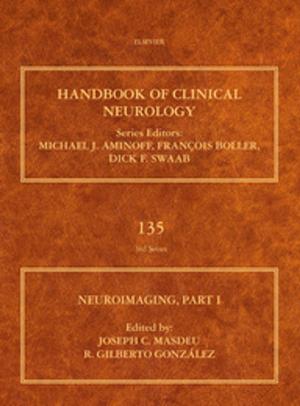Databook of Curatives and Crosslinkers
Nonfiction, Science & Nature, Science, Chemistry, Physical & Theoretical, Technology, Engineering, Chemical & Biochemical| Author: | Malgorzata Hanson, Anna Wypych | ISBN: | 9781927885505 |
| Publisher: | Elsevier Science | Publication: | March 21, 2019 |
| Imprint: | ChemTec Publishing | Language: | English |
| Author: | Malgorzata Hanson, Anna Wypych |
| ISBN: | 9781927885505 |
| Publisher: | Elsevier Science |
| Publication: | March 21, 2019 |
| Imprint: | ChemTec Publishing |
| Language: | English |
Databook of Curatives and Crosslinkers contains extensive data on the most important curatives and crosslinkers in use today. Forty groups of curatives/crosslinkers are included in the book. They include the following chemical groups of additives: acids, acrylamides, aldehydes, amides, amidoamines, amines, anhydrides, aziridines, borates, epoxy-functionalized polymers, carbamides, carbodiimides, chitosan derivatives, cyanamides, diols, glutarates, glycols, graphene oxide derivatives, hydantoin glycols, hydrazides, hydroxides, hydroxyl-containing moieties, imidazoles, isocyanates, isocyanurates, ketimines, maleimides, melamines, novolacs, peroxides, peroxyketals, phenols, polyols, salts, silanes, siloxanes, thiols, titanates, and ziconium derivatives. In total, 416 additives are included in the book.Information on each additive is divided into five sections: General Information, covering name, CAS #, active matter, amine nitrogen, chemical class, cure schedule, and more, Physical Properties, covering odor, color, density, freezing point, gel time, particle size, thin film set time, and more, Health and Safety, covering autoignition temperature, dermal LD50, exposure limits, flash point, and more, Ecological Properties, covering toxicity to algae, bacteria, and fish, sewage treatment, and more, and Use and Performance, offering information on manufacturers, outstanding properties, and more.
To improve navigation throughout the book, four indices have been generated, as follows. The index of curative names is placed at the beginning of the book. Indices of the chemical composition of curatives/crosslinkers, their application for different polymers, and product applications can be found at the end of this book.
- Provides general information, physical properties, health and safety considerations, ecological properties, and use and performance details on approximately 400 curatives and crosslinkers in use today
- Includes examples of application
- Covers active matter, amine value and equivalent, odor, color, boiling point, chronic health effects, first aid, aquatic toxicity, biodegradation probability, recommended applications, processing methods, and more
Databook of Curatives and Crosslinkers contains extensive data on the most important curatives and crosslinkers in use today. Forty groups of curatives/crosslinkers are included in the book. They include the following chemical groups of additives: acids, acrylamides, aldehydes, amides, amidoamines, amines, anhydrides, aziridines, borates, epoxy-functionalized polymers, carbamides, carbodiimides, chitosan derivatives, cyanamides, diols, glutarates, glycols, graphene oxide derivatives, hydantoin glycols, hydrazides, hydroxides, hydroxyl-containing moieties, imidazoles, isocyanates, isocyanurates, ketimines, maleimides, melamines, novolacs, peroxides, peroxyketals, phenols, polyols, salts, silanes, siloxanes, thiols, titanates, and ziconium derivatives. In total, 416 additives are included in the book.Information on each additive is divided into five sections: General Information, covering name, CAS #, active matter, amine nitrogen, chemical class, cure schedule, and more, Physical Properties, covering odor, color, density, freezing point, gel time, particle size, thin film set time, and more, Health and Safety, covering autoignition temperature, dermal LD50, exposure limits, flash point, and more, Ecological Properties, covering toxicity to algae, bacteria, and fish, sewage treatment, and more, and Use and Performance, offering information on manufacturers, outstanding properties, and more.
To improve navigation throughout the book, four indices have been generated, as follows. The index of curative names is placed at the beginning of the book. Indices of the chemical composition of curatives/crosslinkers, their application for different polymers, and product applications can be found at the end of this book.
- Provides general information, physical properties, health and safety considerations, ecological properties, and use and performance details on approximately 400 curatives and crosslinkers in use today
- Includes examples of application
- Covers active matter, amine value and equivalent, odor, color, boiling point, chronic health effects, first aid, aquatic toxicity, biodegradation probability, recommended applications, processing methods, and more















